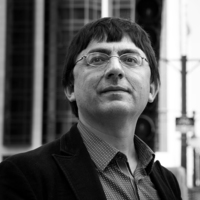
Ömür Harmansah
Ömür Harmansah is the Director of the School of Art & Art Art History at the University of Illinois-Chicago, and at the same time Associate Professor of Art History in the Department of Art History. Ömür Harmansah’s current research focuses on the history of landscapes in the Middle East and the politics of ecology, place, and heritage in the age of the Anthropocene. As an archaeologist and an architectural historian of the ancient Near East, Harmansah specializes in the art, architecture, and material culture of Anatolia, Syria, and Mesopotamia during the Bronze and Iron Ages. Harmansah's earlier research focused on cities, the production of architectural and urban space, critical studies of place and landscape, building technologies and architectural knowledge, and image-making practices in the urban and rural environments. Harmansah is the author of two monographs, Cities and the Shaping of Memory in the Ancient Near East, (Cambridge University Press, 2013), and Place, Memory, and Healing: An Archaeology of Anatolian Rock Monuments (Routledge, 2015). He also edited the volume Of Rocks and Water: Towards an Archaeology of Place, published by Oxbow Books (2014). The monograph Cities and the Shaping of Memory in the Ancient Near East has been translated to Turkish and published by Koc University Press in 2015. Since 2010, Harmansah has been directing Yalburt Yaylasi Archaeological Landscape Research Project, a diachronic regional survey project addressing questions of place and landscape in Konya Province of west-central Turkey. Harmansah is currently working on a new monograph on landscape history and political ecology in the Middle East, addressing the challenges brought about by the new geological epoch Anthropocene, climate change, and environmental crisis on landscape archaeology, cultural heritage, and archaeological field practice. This monograph will bring together insights from current debates in new materialism and political ecology to discuss the precarity of archaeological landscapes and cultural heritage under the impact of late capitalism. He is the Principal Investigator for the 3-year multi-institutional collaborative project entitled “Political Ecology as Practice: A Regional Approach to the Anthropocene”. This project is supported by the Humanities Without Walls consortium, based at the Illinois Program for Research in the Humanities at the University of Illinois at Urbana-Champaign. The Humanities Without Walls consortium is funded by a grant from the Andrew W. Mellon Foundation.Born and raised in Turkey, Ömür studied architecture and architectural history at the Middle East Technical University (Ankara, Turkey), and received his PhD from University of Pennsylvania in the History of Art (2005). He previously taught at Reed College (Portland, OR) and Brown University (Providence, RI) before joining the faculty at UIC’s School of Art and Art History in 2014. He received various sabbatical and research awards, including Koç University’s Research Center for Anatolian Civilizations Senior Fellowship (2009-2010), Brown University’s Cogut Center for the Humanities Faculty Fellowship (Fall 2012), and University of Texas at Austin’s Donald D. Harrington Faculty Research Fellowship(2013-2014). Recently, he has been elected as a “Rising Star” in Art, Architecture, and the Humanities among the 2016 Researcher and Scholar of the Year awards distributed by the Office of the Vice Chancellor at the University of Illinois at Chicago.
Phone: 312-355-0616
Address: School of Art and Art History
University of Illinois at Chicago
106 Jefferson Hall
929 W Harrison Street, MC 201
Chicago, Illinois 60607
Phone: 312-355-0616
Address: School of Art and Art History
University of Illinois at Chicago
106 Jefferson Hall
929 W Harrison Street, MC 201
Chicago, Illinois 60607
less
Related Authors
Pinar Uner Yilmaz
University of Illinois at Chicago
Peri Johnson
University of Illinois at Chicago
Asil Yaman
Villanova University
Deborah Nadal Koussiounelos
University of Oxford
Marco Cavalazzi
Università di Bologna
Michele Abballe
Università Ca' Foscari Venezia
Sarah T Wilker
Oberlin College
Lana Chologauri
Tbilisi State University
Ahmed Shams
Durham University
InterestsView All (230)

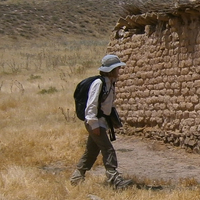

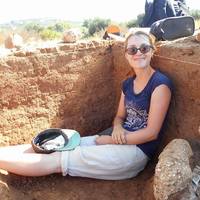
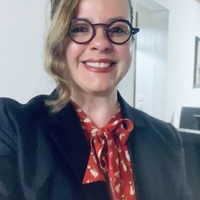
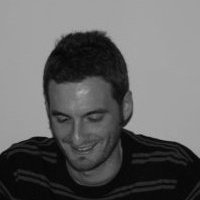
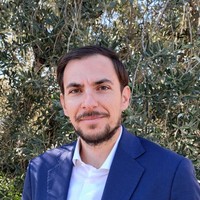
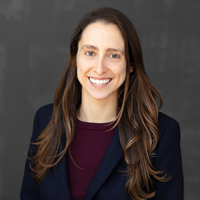
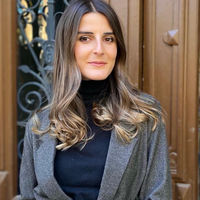
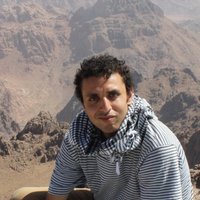
Uploads
Videos by Ömür Harmansah
In the last few centuries of the Hittite Empire, the karstic landscapes of Çavuşçu Lake Basins west of the Konya Plain witnessed the construction of a prestigious, imperially sponsored monument at a prominent spring in the rural countryside: Tudhaliya IV’s sacred pool at Yalburt Yaylası near the Çavuşçu Lake. Yalburt Monument is situated on a mountaintop in a borderland region south of the Hittite Upper Land. The same king initiated the construction of a massive earthen dam at Köylütolu Yayla, 20 km south of Yalburt. Studying the agricultural landscape and the settlement history in the vicinity of these two monuments has shown that the Hittite imperial administration was interested in an agricultural rehabilitation program in this borderland region, right before the collapse of the empire. This talk discusses the results of the Yalburt survey project.
Fresh Off the Press + Forthcoming by Ömür Harmansah
Art can be broadly described as the creative and imaginative work of human communities and individuals using their material skills and acquired bodies of knowledge, to build a meaningful world around them. This course studies the art and architecture of ancient and medieval communities through their material and visual culture. Therefore, the history of art goes back to the paintings on the walls of prehistoric caves and stone tools made by the earliest human communities. The course starts with the Paleolithic cave paintings of Europe and Africa and the monumental ritual architecture of the Near Eastern Neolithic and stretches all the way to the late antique-early Islamic Jerusalem, Byzantine Istanbul/Constantinople, and Gothic capitals of Europe. The survey will highlight monuments such as the Hanging Gardens of Babylon, Assyrian Palaces, Minoan palaces and frescoes, Egyptian pyramids, and mortuary complexes, the Acropolis and the classical city of Athens, Ephesus and Pergamum, ceremonial capitals of the Persian Empire in Persepolis and Pasargadae, Republican and imperial monuments in Rome, Pompeii, and the great North African cities of the Roman Empire. We will finish the course with Istanbul’s Byzantine church, Hagia Sophia, Early Christian and Islamic monuments in Jerusalem, Islamic Andalusia, and early Gothic structures of Europe.
This course satisfies the General Education Requirement Understanding Creative Arts.
Calvino’nun Görünmez Kentler’ini okuyup yazarın çılgınca bir tahayyülle
kurduğu kent tasvirlerinden birinin fiziksel mekana çevirisini yapmak, kurmaca anlatıdan imgeye ve üçboyutlu mekana dönüştürmek bizlere bir tasarım problemi olarak sunulmuştu. O 4 yıl boyunca, Brecht’in bir oyununa tasarladığımız sahne ve kostüm tasarımı haricinde, bana bu
kadar ilham veren ve heyecanlandıran bir proje hatırlamıyorum. Bu proje benim için bir egzersiz olmanın ötesinde, yeni bir yöntem, yeni bir düşünme ve çalışma biçimi olarak beni şaşırtmış ve etkilemişti.
Dolayısıyla, bir eskiçağ mimarlık tarihçisi ve peyzaj arkeoloğu olarak hem verdiğim derslerde hem de eskiçağ kent, mimarlık ve peyzaj tarihi üzerine yazdığım yazılarda Calvino’nun çizdiği rota bir düşünsel izlek olarak beni hemen hemen hiç bırakmadı. Bu kısa yazıda bu izleğin ne olduğuna ilişkin okurla birlikte düşünmeye çalışacağım.
Books by Ömür Harmansah
This book shows that graffiti, a very ancient practice long hidden behind modern disapproval and street culture, have been integral to literacy and self-expression throughout history. Graffiti bear witness to social events and religious practices that are difficult to track in normative and official discourses. This book addresses graffiti practices, in cultures ranging from ancient China and Egypt through early modern Europe to modern Turkey, in illustrated short essays by specialists. It proposes a holistic approach to graffiti as a cultural practice that plays a key role in crucial aspects of human experience and how they can be understood.
Advocating that archaeology can contribute substantively to the study of places in many fields of research and engagement within the humanities and the social sciences, this book seeks to move beyond the oft-conceived notion of places as fixed and unchanging, and argues that places are always unfinished, emergent, and hybrid. Rock cut monuments of Anatolian antiquity are discussed in the historical and micro-regional context of their making at the time of the Hittite Empire and its aftermath, while the book also investigates how such rock-cut places, springs, and caves are associated with new forms of storytelling, holy figures, miracles, and healing in their post-antique life. Anybody wishing to understand places of cultural significance both archaeologically as well as through current theoretical lenses such as heritage studies, ethnography of landscapes, social memory, embodied and sensory experience of the world, post-colonialism, political ecology, cultural geography, sustainability, and globalization will find the case studies and research within this book a doorway to exploring places in new and rewarding ways.
Excerpt
http://www.cambridge.org/servlet/file/store6/item7256988/version1/9781107027947_excerpt.pdf""
Erken demir çağında Asur İmparatorluğu ve Suriye-Hitit devletleri arasında kent kurmak; ortak bir inşa pratiği, resmi söylem ve kültürel kimlik kaynağıdır. Eski Yakındoğu’da Kent, Bellek, Anıt, bu çok yönlü tarihi olgunun karşılaştırmalı bir perspektifle yapılan ayrıntılı ve kapsamlı ilk analizi. Kitap, eskiçağ metinlerini, arkeolojik kazı ve yüzey araştırmaları ile çevre ve mekân analizlerini inceleyerek kent kurma pratiğinin kültürel bir tarihini sunuyor.
Begun in December of 1998, Mapping Augustan Rome had its origins in a graduate seminar initiated by Lothar Haselberger and co-taught with David Gilman Romano at the University of Pennsylvania. Contributors to the project included eleven graduate students and one undergraduate, hailing from various disciplines including archaeology, art history, ancient history, and classics. Each participant was assigned a region of the Urbs to research, producing written entries and annotated visual materials which were then transformed by D.G. Romano and two graduate students into a digital format. Concurrently, Andrew Gallia and Nicholas Stapp worked to model the physical topography of the Augustan city, one of the project’s notable innovations (for technical details: “Making the map”. At the end of the process, Mark Davison, a professional graphic designer, improved the legibility and aesthetics of the maps.
The written text includes two introductory chapters which outline the project’s goals, procedures and accomplishments “An introduction to the experiment”, and explain the intricacies of computerized map-making “Making the map”. The balance of the volume consists of individual entries which seek to justify and explain each aspect of the map. Each region of the city is addressed in a broad, over-arching entry, as are several urban systems such as aqueducts, city walls, and suburban expansion. Individual entries detail nearly 400 buildings, monuments, streets, tombs, neighborhoods, and horti, as well as more than 50 aspects of the Augustan city which could not be visualized, often due to an imperfectly known location (for a complete list, consult the indices of the Main Map). Rather than repeating information already available in topographic dictionaries such as the Lexicon Topographicum Urbis Romae, each entry is limited to issues which impact the rendering process; aspects and debates tangential to the focus of our work are cursorily treated, if at all."
Journal Articles by Ömür Harmansah
In the last few centuries of the Hittite Empire, the karstic landscapes of Çavuşçu Lake Basins west of the Konya Plain witnessed the construction of a prestigious, imperially sponsored monument at a prominent spring in the rural countryside: Tudhaliya IV’s sacred pool at Yalburt Yaylası near the Çavuşçu Lake. Yalburt Monument is situated on a mountaintop in a borderland region south of the Hittite Upper Land. The same king initiated the construction of a massive earthen dam at Köylütolu Yayla, 20 km south of Yalburt. Studying the agricultural landscape and the settlement history in the vicinity of these two monuments has shown that the Hittite imperial administration was interested in an agricultural rehabilitation program in this borderland region, right before the collapse of the empire. This talk discusses the results of the Yalburt survey project.
Art can be broadly described as the creative and imaginative work of human communities and individuals using their material skills and acquired bodies of knowledge, to build a meaningful world around them. This course studies the art and architecture of ancient and medieval communities through their material and visual culture. Therefore, the history of art goes back to the paintings on the walls of prehistoric caves and stone tools made by the earliest human communities. The course starts with the Paleolithic cave paintings of Europe and Africa and the monumental ritual architecture of the Near Eastern Neolithic and stretches all the way to the late antique-early Islamic Jerusalem, Byzantine Istanbul/Constantinople, and Gothic capitals of Europe. The survey will highlight monuments such as the Hanging Gardens of Babylon, Assyrian Palaces, Minoan palaces and frescoes, Egyptian pyramids, and mortuary complexes, the Acropolis and the classical city of Athens, Ephesus and Pergamum, ceremonial capitals of the Persian Empire in Persepolis and Pasargadae, Republican and imperial monuments in Rome, Pompeii, and the great North African cities of the Roman Empire. We will finish the course with Istanbul’s Byzantine church, Hagia Sophia, Early Christian and Islamic monuments in Jerusalem, Islamic Andalusia, and early Gothic structures of Europe.
This course satisfies the General Education Requirement Understanding Creative Arts.
Calvino’nun Görünmez Kentler’ini okuyup yazarın çılgınca bir tahayyülle
kurduğu kent tasvirlerinden birinin fiziksel mekana çevirisini yapmak, kurmaca anlatıdan imgeye ve üçboyutlu mekana dönüştürmek bizlere bir tasarım problemi olarak sunulmuştu. O 4 yıl boyunca, Brecht’in bir oyununa tasarladığımız sahne ve kostüm tasarımı haricinde, bana bu
kadar ilham veren ve heyecanlandıran bir proje hatırlamıyorum. Bu proje benim için bir egzersiz olmanın ötesinde, yeni bir yöntem, yeni bir düşünme ve çalışma biçimi olarak beni şaşırtmış ve etkilemişti.
Dolayısıyla, bir eskiçağ mimarlık tarihçisi ve peyzaj arkeoloğu olarak hem verdiğim derslerde hem de eskiçağ kent, mimarlık ve peyzaj tarihi üzerine yazdığım yazılarda Calvino’nun çizdiği rota bir düşünsel izlek olarak beni hemen hemen hiç bırakmadı. Bu kısa yazıda bu izleğin ne olduğuna ilişkin okurla birlikte düşünmeye çalışacağım.
This book shows that graffiti, a very ancient practice long hidden behind modern disapproval and street culture, have been integral to literacy and self-expression throughout history. Graffiti bear witness to social events and religious practices that are difficult to track in normative and official discourses. This book addresses graffiti practices, in cultures ranging from ancient China and Egypt through early modern Europe to modern Turkey, in illustrated short essays by specialists. It proposes a holistic approach to graffiti as a cultural practice that plays a key role in crucial aspects of human experience and how they can be understood.
Advocating that archaeology can contribute substantively to the study of places in many fields of research and engagement within the humanities and the social sciences, this book seeks to move beyond the oft-conceived notion of places as fixed and unchanging, and argues that places are always unfinished, emergent, and hybrid. Rock cut monuments of Anatolian antiquity are discussed in the historical and micro-regional context of their making at the time of the Hittite Empire and its aftermath, while the book also investigates how such rock-cut places, springs, and caves are associated with new forms of storytelling, holy figures, miracles, and healing in their post-antique life. Anybody wishing to understand places of cultural significance both archaeologically as well as through current theoretical lenses such as heritage studies, ethnography of landscapes, social memory, embodied and sensory experience of the world, post-colonialism, political ecology, cultural geography, sustainability, and globalization will find the case studies and research within this book a doorway to exploring places in new and rewarding ways.
Excerpt
http://www.cambridge.org/servlet/file/store6/item7256988/version1/9781107027947_excerpt.pdf""
Erken demir çağında Asur İmparatorluğu ve Suriye-Hitit devletleri arasında kent kurmak; ortak bir inşa pratiği, resmi söylem ve kültürel kimlik kaynağıdır. Eski Yakındoğu’da Kent, Bellek, Anıt, bu çok yönlü tarihi olgunun karşılaştırmalı bir perspektifle yapılan ayrıntılı ve kapsamlı ilk analizi. Kitap, eskiçağ metinlerini, arkeolojik kazı ve yüzey araştırmaları ile çevre ve mekân analizlerini inceleyerek kent kurma pratiğinin kültürel bir tarihini sunuyor.
Begun in December of 1998, Mapping Augustan Rome had its origins in a graduate seminar initiated by Lothar Haselberger and co-taught with David Gilman Romano at the University of Pennsylvania. Contributors to the project included eleven graduate students and one undergraduate, hailing from various disciplines including archaeology, art history, ancient history, and classics. Each participant was assigned a region of the Urbs to research, producing written entries and annotated visual materials which were then transformed by D.G. Romano and two graduate students into a digital format. Concurrently, Andrew Gallia and Nicholas Stapp worked to model the physical topography of the Augustan city, one of the project’s notable innovations (for technical details: “Making the map”. At the end of the process, Mark Davison, a professional graphic designer, improved the legibility and aesthetics of the maps.
The written text includes two introductory chapters which outline the project’s goals, procedures and accomplishments “An introduction to the experiment”, and explain the intricacies of computerized map-making “Making the map”. The balance of the volume consists of individual entries which seek to justify and explain each aspect of the map. Each region of the city is addressed in a broad, over-arching entry, as are several urban systems such as aqueducts, city walls, and suburban expansion. Individual entries detail nearly 400 buildings, monuments, streets, tombs, neighborhoods, and horti, as well as more than 50 aspects of the Augustan city which could not be visualized, often due to an imperfectly known location (for a complete list, consult the indices of the Main Map). Rather than repeating information already available in topographic dictionaries such as the Lexicon Topographicum Urbis Romae, each entry is limited to issues which impact the rendering process; aspects and debates tangential to the focus of our work are cursorily treated, if at all."
and epigraphic evidence for the formation of the regional state Malizi/Melid. This Syro-Hittite kingdom established itself in the Malatya-Elbistan Plains in eastern Turkey during the first centuries of the Early Iron Age as one of the earliest political entities to emerge from the ashes of the Hittite Empire. Monuments raised by Malizean ‘country lords’ in rural and urban contexts suggest a picture of a fluid landscape in transition, one that was configured through the construction of cities, and other practices of place-making.
architectonic culture: finely carved stone masonry. I argue in this article that monumental building activity, as a historically conspicuous event, creates a medium of exchange of artisanal knowledge and technological innovation. The dramatic
urban landscape of the Iron age city at Ayanis (ancient Rusahinili-Eiduru-kai) in Eastern Turkey on the Eastern shore of Lake Van, features an impressive fabric of such architectonic culture, not only a product of long-term building technologies
in the region, but also that of a series of innovations associated with the reign of its founder Rusa II. This paper specifically focuses on the complex set of stone masonry techniques in the monumental structures at Ayanis, and attempts to reflect
on the multi-faceted aspects of symbolic technologies of production in the context of the foundation of the city. It argues that the highly refined stone masonry in Urartu was a symbolically charged architectural technology that effectively operated as royal insignia in the public sphere, but it also derived from the local corpus of building knowledge in the Lake Van basin.
building operations. These commemorative sites became event-places where state spectacles encountered and merged with local cult practices. The Early Iron Age inscriptions and reliefs carved on the cave walls of the Dibni Su sources at the
site of Birkleyn in Eastern Turkey, known as the ‘Source of the Tigris’ monuments, present a compelling paradigm for such spatial practices. Assyrian kings Tiglathpileser I (1114–1076 B.C.) and Shalmaneser III (858–824 B.C.) carved ‘images of kingship’ and accompanying royal inscriptions at this impressive site in a remote but politically contested region. This important commemorative event was represented in detail on Shalmaneser III’s bronze repouss´e bands from Imgul-Enlil (Tell Balawat) as
well as in his annalistic texts, rearticulating the performance of the place on public monuments in Assyrian urban contexts. This paper approaches the making of the Source of the Tigris monuments as a complex performative place-event. The effect
was to reconfigure a socially significant, mytho-poetic landscape into a landscape of commemoration and cult practice, illustrating Assyrian rhetorics of kingship. These rhetorics were maintained by articulate gestures of inscription that appropriated an already symbolically charged landscape in a liminal territory and made it durable through site-specific spatial practices and narrative representations.
Keywords: mytho-poetic landscape; commemorative monuments; rock reliefs; place; performance; event; rhetorics of kingship; acts of inscription
the artifacts of visual culture, which will help me narrate its story. Contrary to the modern scientific vision of the moon as a “lifeless, rocky satellite,”3 the protagonist of this new materialist tale is no less than a major cosmic actor, a vibrant and powerful god who shaped and safeguarded the everyday life and fate of humanity. New materialism urges us to return to the matter, liberating it as much as possible from the ontological straitjacket of anthropocentric idealism, symbolism, and classification.
from macro-scale explanations of the environment to micro-scale engagement with located practices of place-making.
Arkeoloji bilimini besleyen en önemli can damarının saha çalışması olduğunu meslekten herkes iyi bilir. Kovid-19 salgını başka mesleklerin de başına getirdiği gibi, arkeolojinin can damarını tehdit ediyor ve arkeologlar bu konuda kaygılılar. Adapte olmamız beklenen bu yeni koşullarda saha çalışmasına çıkan arkeoloji emekçileri nasıl uyum sağlayacaklar? Saha pratikleri ve protokolleri bu açıdan nasıl değişecek? Arkeolojik projeler sahada ne türlü sağlık önlemleri alabilecekler? Bunların yanında salgının sebep olduğu, sosyal adaletsizliklerle nasıl başa çıkılacak? Bu sosyal adaletsizlikler arasında, kazılarda çalışan işçilerin istihdam edilememesini, tezleri saha çalışmalarına bağlı olan yüksek lisans ve doktora öğrencilerinin mağduriyetini, Kovid-19 dolayısıyla fonlarını kaybeden ve seyahat kısıtlamaları dolayısıyla ekiplerinden olan arkeoloji projelerini düşünebiliriz.
and urban space; (b) buildings, monuments, and the urban fabric; and
(c) architectural materials, technologies, and the question of visuality. A central question that looms in the background of both monographs is what constitutes a Persian/Iranian city, and how to historicize architectural form within the regional context of the Iranian world and its historical contingencies.
phenomena in their specific historical contexts.
Academic perspectives on ancient communities of the mountains tend to associate them with “landscapes of terror” (e.g., Matthews 2004). In these scenarios, marginalized mountain peoples are presented either as “tribal” threats to urbanized elites of the prosperous plains and lowland and river valleys, or impediments to regional circulation (Horden and Purcell 2000: 80). Such perspectives are produced under the influence of urban archives; they are typical of uncritical characterizations of mountains from an elitist bias and have to be taken with a grain of salt. Archaeological survey evidence, strengthened by ethnohistorical research, presents a far more even-handed perspective on life in the mountains. In this chapter we point to the intimately entangled nature of lowlands and mountains in the local context of west central Anatolia. This chapter is a modest attempt to bring back mountains as complex and connected landscapes of alterity and to invite mountains back to their place within settlement history.
Bu makalede öncelikle 2015 sezonunda yapılan çalışmaları öncelikle kısaca özetlenecektir. Makalenin ikinci kısmında ise Müge Durusu-Tanrıöver’in Ocak 2016’da tamamladığı “Hitit İmparatorluğu’nu Sınırboylarında Deneyimlemek” başlıklı doktora tezinin Yalburt Projesi kapsamındaki sonuçlarına değinilecektir.
Landscapes of the Anthropocene are the lithosphere’s asphalt and concrete layers, sites of mining, extreme extraction, industrial-scale intervention, and chemical contamination; and second, the atmosphere’s global warming gases made from what has been excavated from the earth (fossil fuels like coal). A thirty-three square km open pit lignite mine and power plant are planned for the cultivated fields and pastoral foothills of the Çavuşçu-Kurugöl lake basin that lies within the survey area of the Yalburt Yaylası Archaeological Landscape Research Project in the Ilgın district of Konya province. This proposed sacrificial landscape is a part of the Anthropocene’s lithosphere and atmosphere. In this article, we present a third affected sphere by undertaking a comparison of the hydrosphere of Holocene (Bronze Age) and Anthropocene (contemporary/postindustrial) landscapes, focusing particularly on the dramatic changes in the hydrosphere that have made the agricultural landscapes of Ilgın disposable, thus laying the groundwork for making the lignite mine an acceptable future for the region.
Yalburt Projesi 2010 senesinden beri düzenli olarak süren çalışmaları çerçevesinde bu yepyeni alana katkıda bulunmaya çalışırken, Hitit arkeolojisinde nadir olarak gözlenen bir alana eğilir, ve Hitit imparatorluğu kırsalı ve sınır bölgelerindeki siyasi iktidar-yerel kültür ilişkisini araştırır1. Diyakronik bir bölgesel proje olan Yalburt Yüzey Araştırması biribirine hidrolojik olarak
bağlanan Ilgın ve Atlantı Ovaları ile Çavuşçu Göl Havzası, onları birleştiren nehir vadileri, Yalburt Anıtı’nın da üzerinde konumlandığı Gavur Dağ karst yayla peyzajı ile güneyde Sultan Dağlarının bol pınarlı ve yeşil teraslarına odaklanır (Resim: 1). Bu tarihe kadar gerçekleştirilen arazi sezonlarının ön sonuçlarına göre, özellikle Hitit İmparatorluğu’nun son yüzyılına denk gelen dönemde imparatorluk merkezinden yapılan programlı müdahelelerle, Pedasa olarak bilinen bu sınır memleketinde, hem yeni bir sulama ağı kurulduğu,
tarımsal üretimin artırılmaya çalışıldığı ve hem de Ilgın Ovası’ndaki Boz Höyük gibi muhtemelen yönetsel işlevi olan yeni yerleşimler kurulduğu anlaşılmaktadır. Pedassa ülkesi, Hitit Yukarı Ülke ile batıda Arzawa ülkesi ve güneyde Akdeniz bölgesinde Parha’ya kadar uzanan Tarhuntašša Krallığı
arasında ihtilaflı bir sınır bölgesi teşkil eder. Arkeolojik yüzey araştırma sonucu gözlenen bu devlet müdahelesi, daha önce kırsal alanda kendi başına durduğu halleri ile pek iyi anlaşılamayan Yalburt Yaylası Dağ Pınarı Kutsal
Havuz Anıtı ile Köylütolu Barajı yapıları ile Karaköy Kale Tepesi Hitit kalesini daha sağlam bir tarihsel kapsama yerleştirir (Johnson ve Harmanşah 2015).
tarihi coğrafyası için önemli anlatılar üretebilir, üretmektedir. Bu yönleriyle Türkiye’deki arkeolojik yüzey araştırmaları ve peyzaj tarihi projelerinin metodolojik temelleri, bir yandan Ön Asya (Mezopotamya) arkeolojisinden uzun süredir bilinen bölgesel saha araştırma geleneğine (Wilkinson 2000), öte yandan da Akdeniz dünyasında, özellikle İtalya ve Yunanistan’da yaygın
olan sistematik ve yoğun arazi taraması odaklı yüzey araştırmaları geleneğine dayanır (Given, Knapp, Noller, Sollars, ve Kassianidou; 2013). Bu tür projelerde peyzaj tarihine, hem günümüzün hem de eski çağların yerel siyasi dinamikleri çercevesinde ve büyük ölçekli kalkınma projeleri, devletlerin ve
dış sermayenin kırsal yaşama müdaheleleri ile yerel halkların bunlarla olan ilişkisi kapsamında bakılabilir, bakılmaktadır. Su, tarım toprağı, maden, orman, ve kültürel miras gibi yerel kaynaklar üzerine şekillenen bu siyasi ekolojilere
uzun soluklu ve tarihsel derinlikli bir bakış açısı en verimli olarak bir peyzaj arkeolojisi metodolojisi sayesinde mümkün olabilir.
Yalburt Yaylası Arkeolojik Yüzey Araştırma Projesi, 2010 yılından beri sürdürmekte olduğumuz, Konya ili Ilgın ilçesi sınırları içerisinde çok-dönemli/diyakronik bölgesel bir kırsal peyzaj ve yerleşim tarihi projesidir (Harmanşah ve Johnson 2012, 2013, 2014). Hatırlanacağı gibi proje araştırma sorunsalının merkezine Hitit İmparatorluk dönemine ait anıtsal hiyeroglif yazıtlı Yalburt Yaylası Kutsal Dağ Pınar Anıtı ile yine hiyeroglif yazıtlı Köylütolu Hitit Barajı yapısını alarak özellikle bu anıtların içine oturduğu bölgesel yerleşim peyzajı ve siyasi kapsamını uzun vadeli bir eskiçağ tarihi sürecine yayarak inceler. Projenin dördüncü sezonu saha çalışmaları, 9-22 Temmuz tarihleri arasında iki hafta zarfında kısa olarak gerçekleştirilmiştir. Ayrıca 23 Temmuz-13 Ağustos tarihleri arasındaki üç haftalık sürede de Akşehir Müzesi’nde daha önceki sezonlarda ele geçen seramik ve diğer yüzey buluntuları incelenmesi ile yayına hazırlık çalışmalarının ilki gerçekleştirilmiştir. Bu makalede arazi çalışmalarımızın her iki aşamasında elde edilen veriler ve ön sonuçlarının bir özeti sunulacaktır
Major support for All have the same breath is provided by the Humanities Without Walls consortium, based at the Illinois Program for Research in the Humanities at the University of Illinois at Urbana-Champaign. The Humanities Without Walls consortium is funded by a grant from the Andrew W. Mellon Foundation. Additional support both to this project and the Political Ecologies Working Group is provided by the UIC Institute for the Humanities. Additional support is provided by the School of Art & Art History, the College of Architecture, Design, and the Arts, University of Illinois at Chicago; the Andy Warhol Foundation for the Visual Arts; and a grant from the Illinois Arts Council, a state agency.
Artists: Tamara Becerra Valdez, Leticia Bernaus, Stella Brown, Bochay Drum, Robert Lundberg, Polen Ly, Cate Richards, Geissler/Sann, Nicole Tu-Maung, Ayub Wali
Research Collaborators: Dilcan Acer, Alize Arıcan, Ian G. Baird, Tarini Bedi, Paul Bick, Ralph Cintron, Casey Corcoran, Charles Corwin, Molly Doane, Caitlyn Knecht Dye, W. Nathan Green, Peri Johnson, Ömür Harmanşah, Tannya Islas, Zhe Yu Lee, Haley LeRand, Javairia Shahid, Shivana Shresth, David H. Wise
This field guide is produced as a guide and inspiration for the project’s eight field initiatives that took place at different field sites and regions around the world (in 2017 and 2018) including Bolivia, Cambodia, Pakistan, Turkey and the United States,. It also includes the protocols for the project’s fieldwork initiatives, conceptual framework of the related exhibition (2019), and a series of relevant essays.
Political Ecology in Practice: A Field Guide is publication distributed at the Fieldworker’s Workshop, April 20- 21 2018, in Chicago, IL.
Editorial Team:
Omür Harmanşah
Tamara Becerra Valdez
Pinar Uner Yilmaz
Digital Augustan Rome: http://digitalaugustanrome.org/
See also: Mapping Augustan Rome, L. Haselberger, D.G. Romano, E.A. Dumser, edds. JRA Supplement 50. Providence 2002 (1st ed) / 2008 (2nd ed).
Introduction
By: David Gilman Romano
Digital Augustan Rome is a long term mapping project that is prepared to provide a worthy digital successor to the published book and maps of Mapping Augustan Rome that appeared as Supplement 50 in the Journal of Roman Archaeology Series, 2002. The volume was directed by Lothar Haselberger in collaboration with David Gilman Romano and edited by Elisha Dumser. The entries were written by over 12 authors.
Digital Augustan Rome has also been a group effort and I have been ably assisted in this endeavor by Dr. Nicholas L. Stapp and Mark Davison who were also my collaborators on the original map from the 2002 publication. Our intentions were first signaled at the Third Williams Symposium on Classical Architecture held in Rome in May of 2004 where we presented a brief summary of our thoughts and plans on a successor to the Mapping Augustan Rome volume.1 Since the earliest days of the Mapping Augustan Rome project, it has been our intent to produce a digital version of the results and we have been working towards this goal virtually from the outset. The work of this digital project is the direct result of work carried out in the Archaeological Mapping Lab of the University of Pennsylvania Museum of Archaeology and Anthropology. The work of the lab (formerly the Corinth Computer Project lab) since 1984 has been devoted to using the most modern methods of digital cartography, remote sensing and GIS in the field of ancient cities, landscapes and sanctuaries in order to study and better understand their composition, organization and planning.
The Digital Augustan Rome project relies totally on the work that has been accomplished for the paper volume and maps and is based on the entries of each of the authors that are listed separately here under Mapping Augustan Rome. Whereas Mapping Augustan Rome has appeared in its 2002 published form and a reprinted edition with corrections in 2009, Digital Augustan Rome is envisaged as a living resource for the study of Augustan Rome, one that will be able to be updated and modified as modern research brings new information about the Augustan city to light. In this way it will serve as a ongoing project with the goal to incorporate new information into the digital map.
The maps of the Mapping Augustan Rome project are two: 1:6,000 scale, a map of the entire city with an area of approximately 20 square kilometers and a 1:3,000 scale that is a map focused on the center of the Augustan city, specifically the forum area and neighboring regions. Digital Augustan Rome is based on the 1:6000 map of the publication that has been scanned and digitally linked with the names of all of the entries.
Digital Augustan Rome has been envisaged as a digital publication in three stages that include the phases of work that need to be accomplished. In addition a fourth stage is anticipated as the ongoing work of the project.
http://traumwerk.stanford.edu/archaeolog/2007/12/mapping_sitting_datable_struct.html
Such record prices for antiquities ring louder than the lamentations of any archaeologist over the destruction of clues to the ancient world.
A number of news organizations reported on Sotheby's auction on Dec. 5 in New York, but their headlines tell only part of the story: "Ancient figure of lion shatters record price for sculpture at auction" (BBC World News); "Sculpture as old as civilization tops $65m" (The Sydney Morning Herald); "Tiny lioness figure fetches hefty $57M U.S. at auction" (CBC).
Why not simply say: "Loot and you will make vast sums of money!"
Archaeological imaginations of antiquity resemble in its logic very closely to the utopias of the future. These utopian visions often adopt fragments of an exotic distance past from the ancient world and projected into the future as an avant-garde, a utopian vision, transporting what is familiar to a territory of the unfamiliar. Archaeology in a way does the same in the opposite
direction and constructs the ancient world as an exotic unfamiliar landscape, alien to our modernity. The city of Babylon with its Tower of Babel is perhaps one of the most captivating fragments of antiquity that continuously
surfaces in the course of history.
Architecture or building, in its basic definition, provides shelter for humans and animals (but also sometimes plants). The construction of buildings fulfills this basic need for all communities across the planet if we consider housing as a basic human right. The way we build is fundamentally tied to the place where we build, its specific climate, the material resources that are available around it, its geological or hydrological character, and other basic conditions of its immediate environment. The choice of building materials and technologies of construction are developed relying on the availability of resources and the conditions of the local environment, while the creative input of the indigenous builder or the craftsmen poetically transforms the limitations of the materials and the environment into what we might call dwelling the innovative, constructive act of inhabiting the earth, or the spatial act of settling that is resilient and sustainable. In this way, architectural knowledge is formed and passed down from one generation to the other, from one community to the next. A sense of space and a sense of dwelling and belonging is developed through the cumulative act of building. In this course, we will investigate different forms of dwelling in strikingly different geographies and ecologies of living. While doing so, we will dive deep into discussion questions of technology, environment, climate change, building materials, structure, indigeneity, and indigenous knowledge.
In this seminar, we will pay close attention to the contemporary theories in the field of material culture studies with a special focus on the materials, materiality, agency, and technologies of production. This includes new materialist perspectives on the potency and vibrancy of things, everyday objects, and works of art and architecture, while addressing issues of materiality, technology, and agency through archaeological and art historical case studies, drawn from ancient, medieval, and modern contexts. We will explore new studies on object-oriented ontologies that challenge the long-held divide between subjects and objects, and question the assumed superiority of the human race over animate and inanimate beings.
Archaeological, historical, contemporary and ethnographic case studies will be explored to understand the social relations behind skilled craftsmanship and the poetics of making. This includes bodies of evidence such as prehistoric figurines, ancestor statues, Mesopotamian and Greek cult statues, fetishes of the African- Portuguese early colonial encounter, Byzantine icons, an 18th century chess-playing automaton, Trobriand canoe-prows and Assyrian sculpture recent destroyed by ISIS among others. We will be concerned with how objects take over their own agencies and consider how they should be seen not as completed, fixed entities but as things always in the process of becoming. We will explore the ways in which collective memories are preserved, performed and obliterated in material bodies. We will take a close look at human subject - material object relations in everyday life and question the Western categories of objecthood and subjecthood.
The seminar is also intended to capture current debates on cultural heritage in the Middle East. Such debates have intensified recently with the civil conflicts and political unrest in countries like Iraq, Iran and Afghanistan. The looting of the Iraq Museum in Baghdad, the bombing of Bamiyan Buddhas in Afghanistan, ISIS’s destruction of archaeological artifacts and sites in Iraq and Syria, extensive looting of archaeological sites across the Middle East and the illegal antiquities trade are topics of interest for this course. How can we address this extensive destruction of world heritage that are increasingly becoming targeted in our times of crisis?
Adrian Forty, Words and Buildings (2004). 206.
Why did the Philadelphia police bomb a house in West Philadelphia in 1985 and let the whole neighborhood burn for hours? Why did a Hindu nationalist mob destroy a 16th century mosque in Ayodhya during a riot in 1992? Why is “Ground Zero” such a powerful and evocative place? Why did ancient Babylonian kings dig around to locate the foundations of ancient temples? Why do ruins always draw our interest and curiosity? What stories are told on the walls of ancient, medieval and modern structures?
Before the invention of the printing press, buildings and monuments have been considered as the “book of humanity” on which the stories of humanity had been inscribed. Buildings have been mediators of the past, with their powerful presence and often turbulent histories. Stories cling to their stones, which become visible residues of the human lives that shape them. Memories, imaginations and experiences, collectively shared or individual, give meaning to architectural spaces. This course explores the intersections of memory and architecture through various archaeological case studies from the ancient world. We will work on the hypothesis that memory is not simply a matter of the individual mind: it is always materially manifested and it is always part of our everyday lives.
Art can be broadly described as the creative and imaginative work of human communities and individuals using their material skills and acquired bodies of knowledge, in order to build a meaningful world around them. Architecture involves the building arts that on the one hand allow human communities to construct shelters, houses, and public monuments, while on the other hand characterizes the culturally specific way that they shape the space, the landscape, and the environment around them. Material culture includes everything that one uses in everyday life from kitchen utensils to writing implements, from clothing to cell phones. These are our intimate companions as we live in and make sense of the world. We tend to categorize them as fetishes, souvenirs, heirlooms, tools, knick knacks, voodoo dolls, marionettes, toys, furniture, relics, fossils, pots and pans, amounting to what we cumulatively call “material culture”. Visual culture is the culture of looking at and seeing the world in a particular way and producing images that reflect and embody those specific ways of seeing. In this course, we explore these different categories of things, monuments, and art that are produced by the ancient Near Eastern cultures.
We will start with a discussion of the history of research in/on the Middle East, by the antiquarians, the first archaeologists in the 19th century and the establishment of the first museums to exhibit their finds. The chronological journey of the course starts with the Palaeolithic cave paintings and Neolithic figurines from the oldest, prehistoric communities in the Middle East, and take us all the way to the time when the Middle East was gradually Hellenized after the conquests of Alexander the Great and the collapse of the last Near Eastern empire- the Achaemenid Persian Empire. The survey will highlight precious, sacred objects such as the Uruk Vase, burial goods such as the Royal Tombs of Ur, public monuments such as the Stele of Naram Sin or the Law Stele of Hammurabi, architectural complexes such as the Assyrian Palaces, legendary wonders such as the Hanging Gardens of Babylon or the Tower of Babel.
"Gravel —an aggregate formed by water— became the likely inspiration for this book, a collage of concerns about the ways intersect with nature in the arid Southwest. The humble gravel pit offers an entrance to the strata of place, suggesting some fissures in the capitalist narrative into which art can flow. "
Lucy Lippard (Undermining, 1-2)
We live in very unusual, disturbing times. Debates on the onset of the Anthropocene (the new proposed geological epoch), climate change, and the global environmental crisis have brought to attention that we are at an important turning point in history of the planet earth, while in many places communities are increasingly denied basic rights to their environment, including access to water, land, clean air, biodiversity, and heritage. The social movements of ecological resistance experienced at the Dakota Access Pipeline, or during the privatization of water in Cochabamba, Bolivia, or the construction of the Merowe High Dam in the Northern Sudan, or the Sardinian resistance to the construction of a national environmental preserve speak to us as various local ecologies where the interests of global capitalism, nation states, and the indigenous communities come into conflict. Political ecology is a rapidly growing field of research and political platform concerning the place-based activism in coming to terms with development projects, extreme resource extraction, military conflict, and the other effects of globalization and late capitalist world order. This graduate seminar will investigate key contemporary debates in and fieldwork methodologies of political ecology through the perspective of humanities and the arts, with a special focus on nature, place, and heritage. These three concepts remain at the core of artistic, literary, and architectural engagements with the environment in recent history and will form the main threads of discussion within the seminar. Case studies will feature examples of threats over architectural and natural heritage at sites of dam construction and resource extraction, destruction of archaeological and cultural heritage at sites of military conflict, genealogies of places and landscapes, debates on deep past and deep future, and ecologically conscious art practice.
The primary objective of this seminar is to build collectively a new and innovative way of approaching the politics of ecology from the specific, creative perspective of the humanities and the arts. What is the challenge of ecology and global ecological crisis and local politics of the environment to the humanities and the arts? Political ecology has long been a cross-disciplinary field, and derived its strength from the multiplicity of fields taking part in it, such as political science, environmental sciences, human geography, anthropology of social movements, etc. But what would an explicitly humanities and arts approach to ecology look like? Moreover, political ecology also aims to create platforms of debate not restricted to academic discourse, but are open to dialogue to other stakeholders outside academia. How would one address the challenges of ecological conflicts in various places in the world through an arts and humanities initiative? These are the core questions we will attempt to address in this seminar.
Art can be broadly described as creative and imaginative work of human communities and individuals using their material skills and acquired bodies of knowledge, in order to build a meaningful world around them. This course studies the art and architecture of ancient and medieval communities through their material and visual culture. Therefore the history of art goes back to the paintings on the walls of prehistoric caves and stone tools made by the earliest human communities. The course starts with the Palaeolithic cave paintings of Europe and Africa and the monumental ritual architecture of the Near Eastern Neolithic, and stretches all the way to the late antique-early Islamic Jerusalem, Byzantine Istanbul/Constantinople and Gothic capitals of Europe. The survey will highlight monuments such as the Hanging Gardens of Babylon, Assyrian Palaces, Minoan palaces and frescoes, Egyptian pyramids and mortuary complexes, the Acropolis and the classical city of Athens, Ephesus and Pergamum, ceremonial capitals of the Persian empire in Persepolis and Pasargadae, Republican and imperial monuments in Rome, Pompeii, and the great North African cities of the Roman Empire. We will finish the course with Istanbul’s Hagia Sophia, Islamic Andalusia and early Gothic structures of Europe.
What did the ancient cities look like and how were they shaped in architectural form and in the imagination of its citizens? How did public events, festivals, rituals, and state spectacles shape or impact the layout of a city? In the light of contemporary theories of cities and urban space, this class will investigate eleven cities drawn chronologically from the cities of the Eastern Mediterranean and the Middle East, starting with the Mesopotamian cities such as Ur and Nippur to the Assyrian capital Nineveh and Nebuchadnezzar II's Babylon, ending with late antique Jerusalem and Byzantine Constantinople. We will discuss the making of cities with emphasis on the organization of public events such as festivals, urban rituals, ceremonies, and carnivals that shape their urban spaces. We will therefore discuss the making of cities, negotiated between the representations of urban ideals, politics of space, monumental construction, and the material practices of the society, and explore aspects of the recent scholarly opinion that societies established their relationship with history through their construction and manipulation of architectural spaces.
We will study the art and material culture of various Middle Eastern societies (including Mesopotamian, Syrian, Anatolian, Levantine, Iranian). We will explore their major cities like Ur, Nineveh and Babylon as well as their villages, their festivals and rituals, their kings, priests, craftsmen as well as their peasants, their impressive palaces, temples and ziggurats as well as modest mudbrick houses, their mythologies, poems, royal inscriptions as well as mundane letters. We will explore how the textual sources and archaeological evidence can be put together to arrive at novel interpretations of the past. In the Middle East, archaeology is frequently a politicized field, and the contemporary political circumstances have a massive impact on how the ancient past is documented, studied and represented. Using several archaeological case studies in the ancient Middle East, the course intends to unpack the modern scholarly and public context of archaeological discourses. It will not only provide a broad empirical bases for the region’s social and cultural history but also will allow students to see how particular ways of writing history is embedded in contemporary socio-political climate. The class will be a mixture of lectures and class discussions.
Abrams 1988: 76-77.
The discourses on the state and state formation have dominated archaeological explorations of Early Mesopotamia in association with the development of social and bureaucratic complexity, agricultural technologies, monumental architecture, urbanization, long distance trade, colonization and the development of writing. Archaeological evidence from the material worlds of the early Near East (especially during the 4th and 3rd millennia BC) have been written under narratives of the state from chiefdoms to city-states and to empires, while the artifacts, texts and spaces of the past were painstakingly linked to the ideologies, power structures and political economies of the state. This course unpacks this preoccupation with states and power as a modernist scholarly practice and deconstruct its instrumentalizations of the material pasts. We will consider the more recent explicit postcolonial/postprocessual distancing of academic interests from such frames of reference, and explore alternative paradigms that challenge neo-evolutionary narratives of the state and social complexity. Turning the macro models of the state on their head, we will focus on how micro level material practices constitute the social world, and in what ways an explicitly archaeological approach can contribute to the critique of those macro models. Exploring various case studies from the ancient Near East, questions of social practices and social change, domination and resistance, collectivity, materiality and agency, political landscapes and state spectacles will be brought up in our discussions, while focusing primarily on Mesopotamia, Anatolia and the Levant from 9000 BC to approximately 2000 BC.
Archaeology, as a modern discipline, investigates the past through the study of its material remains. This material record is documented and interpreted through various intellectual activities from fieldwork to publication. But archaeologists are usually torn between their work in the field (digging, surveying, drawing, travelling, taking notes) and in their academic environment (processing data, interpreting, publishing). Throughout the semester we will spend some thought on this divided life between the field and discourse, and explore some of the novel attempts have been made to bridge them.
Archaeology frequently becomes entangled with our daily lives through its politicized engagement with the past and issues of identity. We will examine various theoretical approaches and historiographic models used in archaeology since its inception in the 19th century, while putting a particular emphasis on the recent developments in the theories and methodologies in archaeology in the last few decades. It is intended to provide a solid theoretical and historigraphic basis for the discipline of archaeology. The first few weeks of the course will be dedicated to discussing the central movements in the discipline such as culture-history, New Archaeology, and contextual archaeology, while the second half deals with more contemporary theoretical paradigms such as gender and sexuality, technology and agency, space, place and landscape, and issues of cultural heritage. Particular archaeological materials, sites, projects will be used in discussing the potentials and disadvantages of various approaches. Archaeological case studies will be drawn mostly from the ancient Western Asian and Mediterranean worlds.
This course offers a survey of the art of the ancient Mediterranean world. We will explore important architectural monuments, artifacts and works of art from Mesopotamia, Egypt, prehistoric Aegean and the Eastern Mediterranean, Greece and Rome, through visually rich, chronologically structured lectures. The intention is to give students a well-rounded background in the art, visual culture, architecture and archaeology of the Western Asian and Eastern Mediterranean worlds. The course starts with the monumental stone-henge like ritual architecture of the Near Eastern Neolithic, and stretches all the way to the late antique-early Islamic Jerusalem and Byzantine Istanbul/Constantinople. The survey will highlight monuments such as the Hanging Gardens of Babylon, Assyrian Palaces, Minoan palaces and frescoes, Egyptian pyramids and mortuary complexes, the Acropolis and the classical city of Athens, Ephesus, Alexandria and Pergamum, ceremonial capitals of the Persian empire in Persepolis and Pasargadae, cities and victories of Alexander the Great, Hellenistic altar of Zeus from Pergamum, Mausoleum of Halicarnassus and the Seven Wonders of the World, Republican and imperial monuments in Rome, Pompeii, and the great North African cities of the Roman Empire and finish with Istanbul’s Hagia Sophia.
In recent decades, both archaeologists and anthropologists who work in the precarious war zones in the Middle East have been increasingly drawn into collaborations with western and local military forces via initiatives such as the so called Human Terrain Systems, adopting military technologies for accessing data about otherwise inaccessible places, and accepting funding from the military for field research. These developments intersect with a cultural/social scientific turn in the U.S. military. Likewise, in recent years, several new archaeological projects have been initiated by western archaeological teams in war-torn countries such as Iraq, Afghanistan and Palestine. Concerns of western institutions for the loss of cultural heritage are often canalized into initiatives to rescue heritage, supported by narratives of global ownership. The methodological, ethical, political, cultural, and practical implications of these new initiatives and collaborations however have been rarely discussed in academic contexts, even though their problematic aspects have been pointed out persistently by several anthropologists and archaeologists, for example through the Network of Concerned Anthropologists. This workshop will provide a platform for an open and critical discussion of the ethical implications of archaeological and anthropological fieldwork in conflict zones in the Middle East, collaborations with the military and what it means to be embedded in the military complex in both the contemporary and the historical contexts.
Workshop Format
The core of the workshop is organized around 3 sessions. Each session is composed of a series of papers and one commentator. Papers will be pre-circulated two weeks ahead of the workshop (due April 15th, 2014) and made available to the discussants so that they can draft their response. The paper presenters will briefly summarize their positions in 12-15 minute presentations, which will be followed by a substantive response from a discussant (20-25 minutes). The workshop will be concluded with two hours of open forum/round table discussion.
Places are inherently politically contested for they are frequently prone to appropriation by political agents and colonial powers. Marko Živković in his “Serbian Landscapes of Dreamtime” spoke of places of power that “have become widely shared symbolic tokens in a particular polity because they accumulated many and varied layers of meaning” and that “the powers that be always seek to insert their ideology through these locations on which we drape our memories.” (Živković 2011: 169). Places of religious practice such as shrines and sacred spots, places of healing and therapeutic landscapes, storied locales such as caves, unusual rock formations and haunted ruins, memorialized locations of significant events, sites of heritage and ancestral memory come to the foreground when thinking about small places.
How do academics in the humanities and the social sciences approach places that are so vital for communities around the world, so widely contested and vulnerable to erasure? This workshop is intended to provide a platform of critical discussion in the humanities and social sciences to explore, map and make visible small places that are draped with particular memories, configured by cultural practices, and contested in political terms. It seeks genealogical approaches to place to unwrap layers of accumulated meaning in the social sphere. Cultural biographies of place, historical and archaeological case studies of socially significant places, studies of politically contested sites of memory, case studies in political ecologies and place-based resistance will form the core of the discussions at the workshop, which will bring together scholars working on contemporary, early modern, medieval and ancient worlds.
WORKSHOP FORMAT
The workshop will start with a keynote address by a prominent thinker on place, politics and memory. Following this, there will be 7-8 formal papers during the workshop divided into three sessions composed of two papers each. Papers will be pre-circulated 2 weeks ahead of time to discussants. Each session will be composed of 30-35 minute presentations of the two formal papers, followed by a 20-25 minute response from the session discussant (preferably to be elected from local UT Austin faculty). Following the response, there will be a 40-45 minute open forum discussion, moderated by the session chair/discussant."